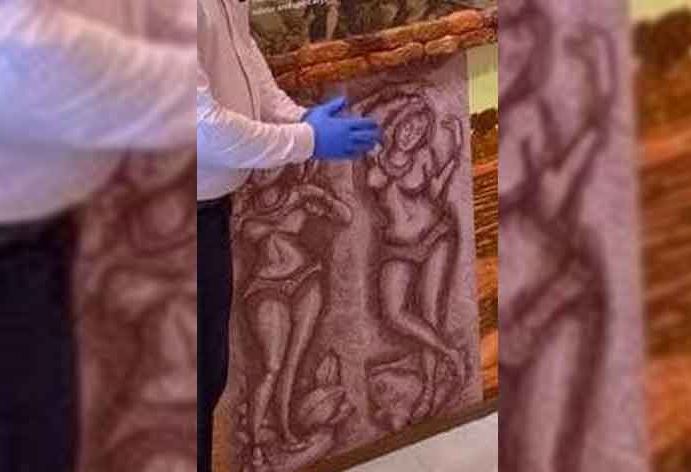Amritsar: A controversy has erupted over the placement of a picture of two semi-naked women striking different poses — similar to those depicted in Ajanta and Ellora caves — at an upcoming renovated photo gallery at the Jallianwala Bagh amid portraits of national heroes and first Sikh master, Guru Nanak Dev.
The International Sarv Kamboj Samaj has lodged a strong protest with Prime Minister Narendra Modi — who is the Jallianwala Bagh National Memorial Trust President — and demanded the removal of the offending picture from the national memorial to the Indian freedom struggle.
The Jallianwala Bagh complex is currently undergoing a massive makeover in this historical city of Punjab. Authorities say the renovation/restoration began on February 15 under the supervision of Archaeological Survey of India and will reopen to the public from July 31.
The Centre has allocated Rs 20 crore in the first phase through the Ministry of Culture. The renovation work is supervised by BJP member of Parliament Shwait Malik, who is also a trustee of the Jallianwala Bagh National Memorial Trust. He last visited the galley July 17.
“The Jallianwala Bagh is no less than a pilgrimage centre for every Indian. Hundreds of people, comprising schoolchildren and families, visit it every day to pay respect to those who sacrificed their lives for the country,” International Sarv Kamboj Samaj President Bobby Kamboj told IANS.
He said it was a “shame for us when we came to know on Saturday that authorities had put on display the picture of semi-nude women in the gallery, which houses a collection of portraits and paintings of national heroes and Sikh gurus”.
He said the martyrs have been “insulted” by such display of an offensive picture in the gallery.
In a letter to Prime Minister Modi, Home Minister Amit Shah, and Defence Minister Rajnath Singh, he said the trust had also insulted the martyrs by setting up a ticket window right in front of the statue of Shaheed Udham Singh at the main entrance. It demanded the shifting of the ticket window as well.
The objectionable picture is placed close to a portrait of Sikh monarch, Maharaja Ranjit Singh, also known as Sher-e-Punjab (Lion of Punjab) for his bravery and one of the most revered heroes in Indian history.
A large portrait of Guru Nanak Dev is installed on the right side of that picture.
A big statue of Sikh warrior Baba Banda Singh Bahadur, who had the distinction of consolidating the Sikh rule in India in 1711, has also been set up in the gallery along with depiction of glorious contribution of ‘Gadri Babas’ (revolutionary fighters) in the national freedom struggle.
“I have no information about the installation of the picture of two semi-naked women in the gallery,” trustee Malik told the media Saturday.
In fact, he was caught on camera while standing in front of the offensive picture during his last visit to the gallery.
“I will inquire (about the semi-naked picture) and only then comment,” he added.
Located in the vicinity of the Golden Temple complex, the Jallianwala Bagh witnessed one of the bloodiest massacre of the pre Independence era when at least 379 civilians were gunned down on April 13, 1919, by British India Army on the orders of Acting Brigadier-General Reginald Dyer. Over 1,000 others were injured. The incident catalysed the Indians’ struggle for freedom.
Under renovation is an old well — the martyrs’ well — within the park, which is a silent witness to the brutal killings on April 13, 1919. It is going to be put under a dome-shaped see-through fibre-glass canopy.
